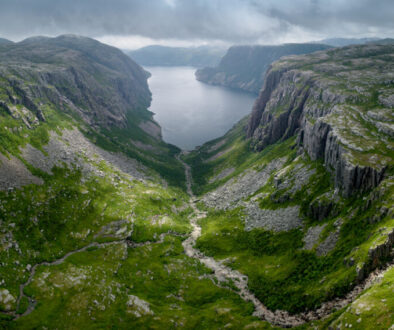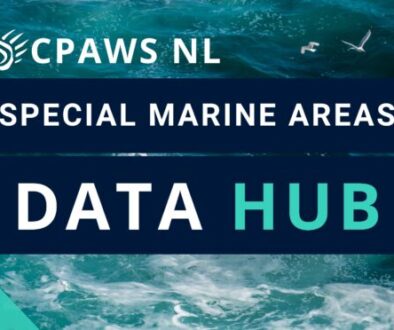Conservation Group Expresses Concerns About Draft Regulations for Laurentian Channel MPA
OTTAWA – The Canadian Parks and Wilderness Society (CPAWS) is deeply concerned about the draft regulations, released today, for the Laurentian Channel marine protected area (MPA) off the coast of Newfoundland and Labrador.
“We are very concerned that Fisheries and Oceans Canada (DFO) would recommend regulations allowing oil and gas activities to continue in a marine protected area in Canada,” said Sabine Jessen, CPAWS National Ocean Program Director. “Laurentian Channel is an ecological gem that will suffer irreparable harm if oil and gas activities are allowed.”
“Laurentian Channel is a biodiversity hotspot in Canada’s Atlantic region,” noted Tanya Edwards, CPAWS Newfoundland and Labrador Co-Executive Director. “It is a critical migration route for many species, including 20 species of whales, an important spawning, nursery, and feeding area for species such as Atlantic cod and redfish, and habitat for rare species such as porbeagle sharks, leatherback sea turtles, and Northern wolfish,” added Edwards. “This is also the only place where black dogfish pup, and represents the highest concentration of this species in Canada’s ocean. To top it all off, Laurentian Channel has been described as having the highest sea pen concentrations off Canada’s east coast.”
Under the Convention on Biological Diversity (CBD), the Government of Canada has committed to protect at least 10% of Canada’s ocean territory by 2020, and has set an ambitious interim target of 5% by the end of 2017. Currently, according to the government’s calculation, with the recent addition of St. Anns Bank off Cape Breton in Nova Scotia, Canada sits at 1.54% protected.
“While CPAWS is very supportive of the government’s efforts to meet its international commitment under the CBD to protect at least 10% by 2020, we are concerned the areas being “protected” do not meet the standard set out under the Convention, and therefore will not actually count toward this target,” added Jessen. “We strongly encourage Canada to ensure, in meeting the target, we establish effective MPAs that will actually protect biodiversity.”
Nearby St. Anns Bank Marine Protected Area, which was officially created off the coast of Nova Scotia earlier this month, is entirely off-limits to oil and gas exploration and development.
“It’s quite the contrast,” says Chris Miller, CPAWS National Conservation Biologist. “The two marine protected areas almost touch, and have similar conservation values, yet one is entirely closed to oil and gas exploration and the other is almost entirely open. Clearly there is a need for Fisheries and Oceans to establish minimum protection standards to ensure all of Canada’s marine protected areas are off limits to these types of industrial activities.”
Also a concern for CPAWS is the hacking away at the boundary of Laurentian Channel Marine Protected Area. After closed door meetings with industry, DFO made the decision to reduce the size of the Laurentian Channel MPA by over one-third and remove ecologically important areas that belong in and need protection in the MPA. CPAWS is looking forward to working with DFO to improve the drafts regulations for Laurentian Channel prior to them being finalized
“We are committed to developing stronger stakeholder and public engagement processes to ensure future MPAs are designed in a more transparent manner,” said Jessen. “Public and stakeholder confidence in the MPA process is critical if the government is to meet and exceed the ambitious targets it has set. Transparency and integrity are key to this confidence.”
Contacts:
Sabine Jessen, CPAWS National Ocean Program Director
604-657-2813 (cell)
sabine@cpawsbc.org
Tanya Edwards, CPAWS Newfoundland and Labrador Co-Executive Director
709-726-5800
tedwards@cpaws.org
Chris Miller, CPAWS National Conservation Biologist
902-880-0726
cmiller@cpaws.org


